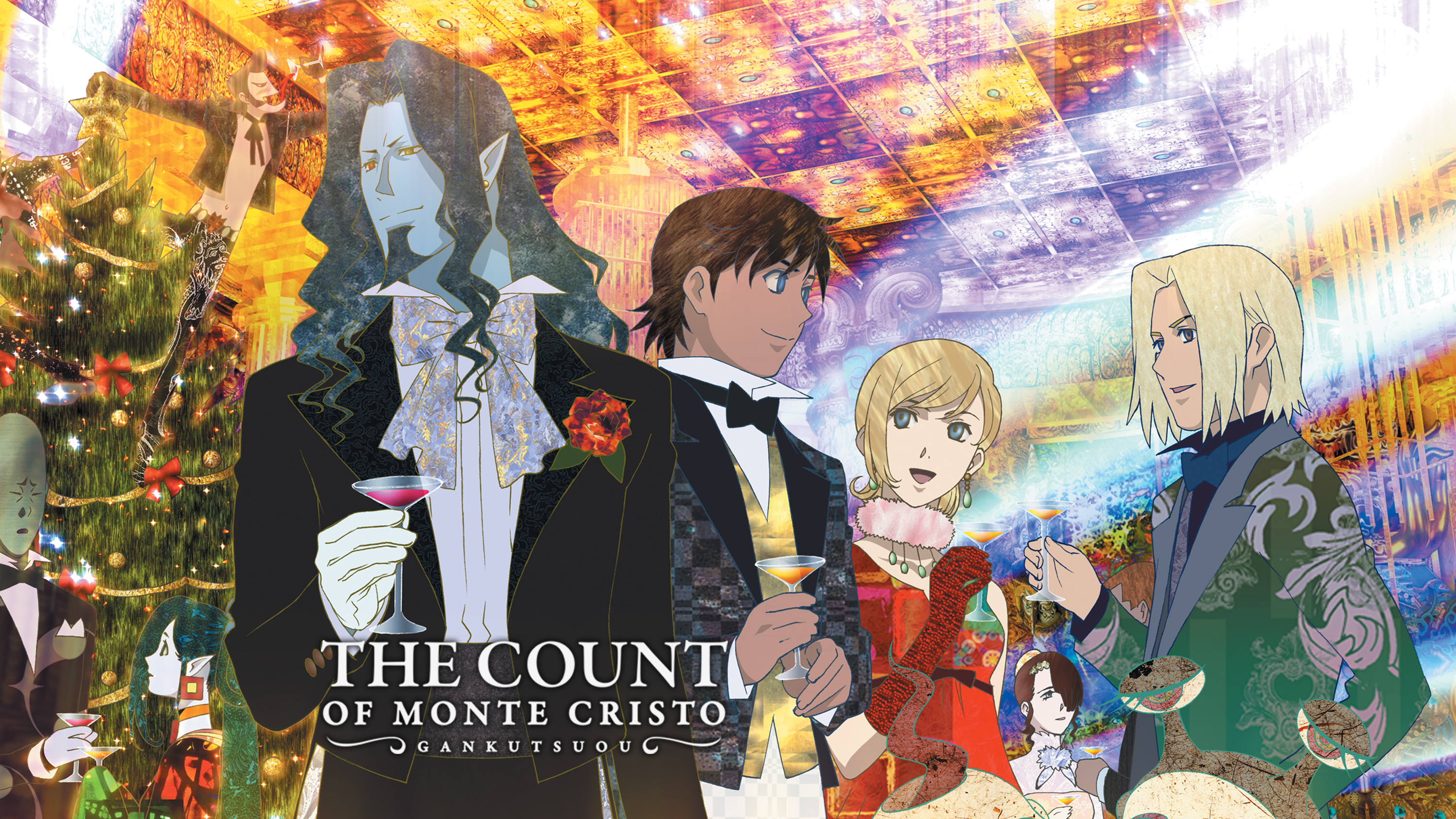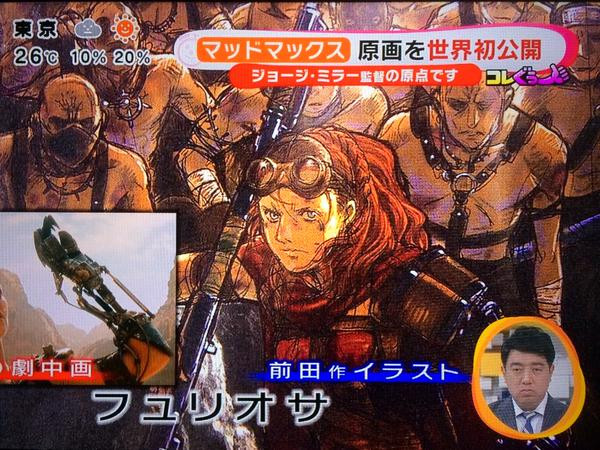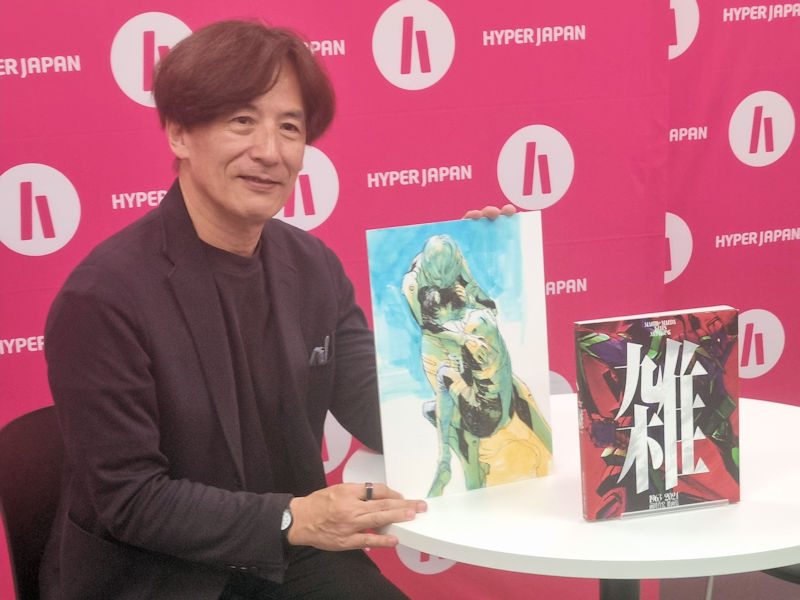
Written by Daniel MacKeith on 26 Aug 2025
This is my first convention interview, so let me give you a rundown of how it felt as things got underway:
4:21pm. I’ve sat down, on a chair that I’ve pulled somewhat awkwardly over, placed my bags and arse in their appropriate positions, and am now trying somewhat desperately to mask the waves of nervousness that are now washing over me, threatening at the wrong reaction to smother me completely, turn to raw unfiltered panic before I can help myself. It does not, thankfully. I breathe, I look around the room, take it all in.
4:25pm. I’m not sure what I had exactly expected before I came in - perhaps something bigger to be honest. Something picked from one of the movies that are running in my head right about now, a familiar scene that I am now rather unfamiliarly a part of. I think of the big white wallpaper lined rooms, rows of chairs, the seat and table up front, microphone poised for the speaker: a medal marking their importance, worn near the mouth, something to ensure no word is lost, no sentence too insignificant. They have the white wallpaper down, the bright lights blaring at me from above too, harsh on my eyes and my nerves. But it’s smaller, only two rows of chairs, and not many people on those rows either. Disappointingly, there is no microphone. I’m sitting at the back. I could have sat closer, but I didn’t want to take up space, I didn’t feel like I should.
4:29pm. Any minute now, Mahiro Maeda will walk into this room, sit down at one of the two chairs positioned up at the front, and I will have the opportunity to ask him a question.
4:30pm. At this time, in the room that I am sitting in, sweating nervously through my now criminally clammy palms (if you could get arrested for having sweaty hands that is), the interview will begin.
If you’re reading this article, and have made it this far through my rambling, then you’ll probably be familiar with who Mahiro Maeda is, but I’ll give a little summary anyway. Mahiro Maeda is perhaps best known for being part of two powerhouse teams: The Gainax team which worked on the original Evangelion series, and the Hayao Miyazaki led studio Ghibli team. Maeda is much more than that though, he’s been working at the pinnacle of Japanese animation about as long as I’ve been alive, likely longer. Maeda designed two of the iconic angels for the aforementioned Evangelion, went on to help direct the Rebuild of Evangelion films and has worked on shows like One punch man, Kill la Kill, Samurai Champloo and helmed the production of Gankutsuou: The Count of Monte Cristo. In attendance for his talk prior to this interview, dozens of fans showed up. How many of them were inspired by his work, had the spark of creative passion lit within them, steered their life in a different direction or were pulled back from the brink of despair. How many I cannot say. 4:30. As I watch him walk into the room, see for the first time in person the man I have up until now only seen through screens, I feel the full weight of the description I have just given. I feel this, and I feel an immense privilege that I get to be here. This is not to put myself down, (although like any artist I am prone to such things), but I found myself confronted by the fact that, for someone like Maeda, this seems to be an inadequate welcome. I wonder to myself that, if he were a Western born artist, who had lived and worked in America or the UK, had worked in teams and on productions of different names, if he would be in the same situation.

When people talk about their favourite shows or films, you’ll often not hear someone cite something that is animated. I feel as though this runs you this risk of being labelled ‘that kind of person’, someone who is still into cartoons. I believe there is this preconceived notion of animation, that it is something either juvenile or obscene. Either it is the harmless but irrelevant cartoons that are shown to children: something to distract the kids for an hour or two, but nothing to take seriously. Or it is the scandalous and distasteful adult animation: something that is undeniably mature, but too much so. Too violent, too perverted, too uncomfortable, or as is often the case, too weird. Anime certainly suffers from this label, time and time again. It is the kind of thing that you couldn’t openly admit you enjoyed without risk of severe ridicule, and, although now we are progressing into a golden age of sorts, is still something that the average person won’t readily watch. What has most prominently passed over, namely the works of Hayao Miyazaki, toes the line, admittedly in a rather fantastic way. They are fantastical and adventurous, but also mature and measured, they warm the heart but also challenge the mind. They are artistic, that is undeniably so, but so are all the works I have listed. This to me is undeniable, Maeda’s work is undeniable.
Inevitably Maeda is asked about his inspirations when designing monsters, he responds by referencing Ultraman. He talks about how, when watching the show all those years ago, alien monsters that bore a humanlike resemblance elicited no empathy from him, however, those that were animalistic in appearance did. This kind of ethos is clear in his famous designs for Evangelion, the Angel Gaghiel bearing a strong resemblance to a sea leviathan, resembling a blue whale, and the Angel Israfel, to my eyes, almost bearing the resemblance of that of a starfish, a choice that I was sadly unable to question Maeda on, but one that stuck with me personally. There is something to be said about this kind of artistry, to seek to find compassion for the nonhuman, to recognise that the creatures of this Earth are just as deserving of empathy as any of us. Growing up surrounded by nature, by the mountains and the sea, I can imagine that Maeda himself would have spent many moments paying reverence to this kind of beauty. I wonder if he ever watched the waves roll in, saw the sun kiss the surface of the sea, watched the sky cry colours as it set. Art is something that provokes feeling, that stirs thought, art is expression, it is bold and unapologetic, it says what is true to it, and it does not care for what others may think. Anything that is this pure expression, that has that passion, to me, is art. But we so often put up boundaries to this definition, and in doing so, limit ourselves to the full breadth and potential of human expression.
In Maeda’s collaboration with director George Miller, the two had planned on releasing a feature length anime spin off, at the same time as the live action film. A film focused on the character of Furiosa, serving as a prequel, a dual release that would have been at the time unprecedented. And yet, only one was shown in cinemas. The film was a smash hit on release and has since received pretty much unanimous critical and commercial acclaim, garnering a cult following. I still see the occasional post on social media, a testament to the enduring success of the project, the hunger in general audiences for something like it. Why is it then, that the anime was never given the chance to even come into being, the reason being a ‘lack of market’. Audiences loved the fantastical and outlandish elements of the film, they loved the larger-than-life characters, the bombastic action sequences and the epic nature of the story, all things that are abundant in anime. For the general viewer, there is something for any kind of taste: action, fantasy, romance and thriller. More than that, for those who love something larger than life, that pushes boundaries and dares to be boldly creative, anime and manga are constantly embodying these values. The ultra-competitive nature of the Japanese market pushes out new and exciting stories all the time, whilst we so often see stagnant franchises milked for all their worth, there is a wealth of original stories just waiting to be seen, to be given the attention they deserve.

Enough time has passed. With no more room to hide, and no more leeway to hesitate, I ask my own question. Mine pertains to science fiction literature. I know that Maeda is a fan himself, having combed through his blog, and I am excited to see what works he has admired, what artists he has looked up to, which ones that have sparked his own passion, fuelled his creativity. I seem to have done a decent job of it; he states that he prefers to read prose nowadays more so than manga. To him I am sure there is no arbitrary distinction between what he will or will not read or consume, I am sure he takes inspiration wherever he can find it and enjoys good art wherever he can. He mentions works like Neuromancer by William Gibson, short stories from the 80s, and Dune. I am lucky enough to hear from him himself, that when he had met Miyazaki to see much of the concept art that would become Nausicaa, that those designs had been inspired by Dune, something that, as a diehard fan of both, I still like to think about. Good art lays the foundations for further creativity. Although I think of Maeda and Miyazaki as titans, as peerless creators, they too take inspiration from those before them. I wonder what it is that gripped Miyazaki about Dune, what Maeda admired in the works. I wonder what an adaptation from either man might look like, what kind of world would be created.
Maeda mentions how he had been in talks to work on Denis Villeneuve's adaptation of the books, but that it hadn’t fully manifested. I mourn the loss of the works that could have been, the designs that weren’t made, the art that I cannot see. I find myself thinking about the works Maeda has been a part of: The vibrant colours and intricate patterning of Gankutsuou. The otherworldly Eva’s and Angels of Evangelion, at once beautiful and disturbing. The gorgeous scenery of Nausicaä, its reverent depictions of nature and the ancient power and knowledge it embodies. I do not know why Maeda wasn’t able to collaborate on the production of Dune, I do know that this makes two major Hollywood projects he was not able to be a part of. I get the sense that Maeda, like most artists, is dedicated to the craft first and foremost, that he enjoys the act of bringing ideas to life, turning dreams to reality. When asked about what advice he’d give to up and coming artists, Maeda states that you should never give up, to stay alive and enjoy what you do, it is pragmatic but hopeful. So long as artists can create, so long as they can make a living, so long as they find love in their craft, they are successful. Maeda is undeniably a successful artist, he has the accolades to prove it. But I feel the success lies in his passion, his dedication to his dreams, the way that he continues to pursue them, even after having done so much. For him, I believe that the effort itself is a virtue.
Anime and manga still have a way to go in the West. Even now, when there is so much publicity and popularity, they are still somewhat niche. Hollywood blockbusters may grace our screens relentlessly, but I have yet to see a time when the latest Shonen Jump smash hit is promoted with as much enthusiasm. And yet, despite this, anime and manga power on, undeterred by the lack of mainstream Western appeal. I suppose that is a feature of all good art, it exists for its own sake, it is made for the love of the craft (although anime and manga are certainly doing more than well in Japan). Maeda himself is still working on new projects, works that he couldn’t talk about, but that I will nonetheless be eagerly awaiting. He still released his own artbook, one that I would urge anyone with the money and passion (or curiosity) to buy. All the time, new works are released, new manga, new anime, new films, new artists breaking through and old ones powering on. There is a whole world of art out there, growing and evolving. I hope for anime and manga to gain more and more popularity in the West, I believe that it will, times have changed after all. I myself will continue to do whatever I can to promote and push that future. In the meantime, though, it is nice to sit back and take it all in.


Like many nerds I tend to live in whatever world I'm consuming at the moment. Writing is mainly an outlet for me to channel my feral need to ramble about these things that are slowly becoming more and more integral parts of my personality. Substack
posted by Ross Liversidge on 27 Nov 2025
posted by Ross Liversidge on 21 Nov 2025
posted by Ross Liversidge on 16 Oct 2025
posted by Ross Liversidge on 14 Oct 2025
posted by Ross Liversidge on 10 Oct 2025
posted by Ross Liversidge on 30 Sep 2025
posted by on 12 Sep 2025